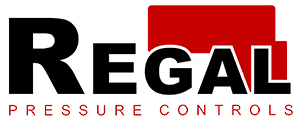Introduction
In the realm of process control and industrial automation, pressure difference switches have emerged as essential tools for monitoring and managing fluid systems. These intelligent devices play a pivotal role in detecting variations in pressure between two points in a system and triggering responsive actions. In this article, we delve into the fascinating world of pressure difference switches, exploring their mechanism, applications, and the benefits they offer to a variety of industries.
Understanding Pressure Difference Switches
A pressure difference switch, also known as a differential pressure switch, operates by comparing pressures at two distinct points in a fluid system. It monitors the difference between the pressures and activates specific responses when the predefined pressure threshold is breached. This ingenious mechanism enables pressure difference switches to regulate and safeguard processes in various applications.
Mechanism and Components
The core components of a pressure difference switch include:
- Sensing Elements: These elements detect pressure variations between two points in a system. They convert the pressure difference into an electrical signal that the switch can interpret.
- Setpoint Adjustment: Most pressure difference switches allow users to customize the pressure difference at which the switch activates. This adjustability accommodates different operational needs and sensitivity requirements.
- Electrical Contacts: When the detected pressure difference surpasses the setpoint, the electrical contacts within the switch undergo a change in state. This change can open or close an electrical circuit, triggering connected actions such as activating alarms or shutting down equipment.
- Housing: Pressure difference switches are housed to shield their sensitive internal components from environmental factors, enhancing their durability and longevity.
- Response Mechanisms: These can vary from audible or visual alarms to controlling pumps, valves, or actuators to adjust the system’s pressure levels.
Applications of Pressure Difference Switches
Pressure difference switches are versatile devices that find utility across a wide spectrum of industries:
- Air Filtration Systems: In HVAC systems, pressure difference switches monitor air filters’ clogging levels, prompting timely replacements to ensure efficient airflow and system performance.
- Cleanrooms: In cleanroom environments, these switches maintain optimal pressure differentials between rooms to prevent cross-contamination and maintain air quality standards.
- Industrial Processes: Pressure difference switches are integral to chemical, pharmaceutical, and manufacturing industries, where they oversee fluid levels, detect leaks, and regulate critical pressure differentials.
- Hydronic Systems: In heating and cooling systems, these switches control valve actuators to balance water flow, ensuring consistent temperature regulation.
- Ventilation Systems: Pressure difference switches play a crucial role in laboratories and pharmaceutical facilities, controlling exhaust systems to prevent the spread of hazardous fumes.
Advantages of Pressure Difference Switches
- Precision: Pressure difference switches offer accurate pressure monitoring and control, optimizing process efficiency and minimizing system downtimes.
- Safety Enhancement: By promptly detecting deviations in pressure, these switches contribute to preventing potential system malfunctions and hazardous situations.
- Adaptability: The ability to adjust the setpoint makes pressure difference switches adaptable to different operational requirements and system configurations.
- Reliability: Built with robust materials and designs, these switches are engineered to withstand harsh environments and demanding industrial conditions.
- Energy Efficiency: Pressure difference switches aid in energy conservation by ensuring that systems only operate when necessary, leading to reduced energy consumption.
Conclusion
Pressure difference switches epitomize the innovative strides taken in industrial automation to enhance efficiency, safety, and control. With their capability to monitor and manage pressure variations between two points, they have become indispensable tools across a multitude of industries. As the demand for precision and automation continues to grow, pressure difference switches stand as a testament to human ingenuity, shaping the landscape of process control and automation in diverse sectors.
